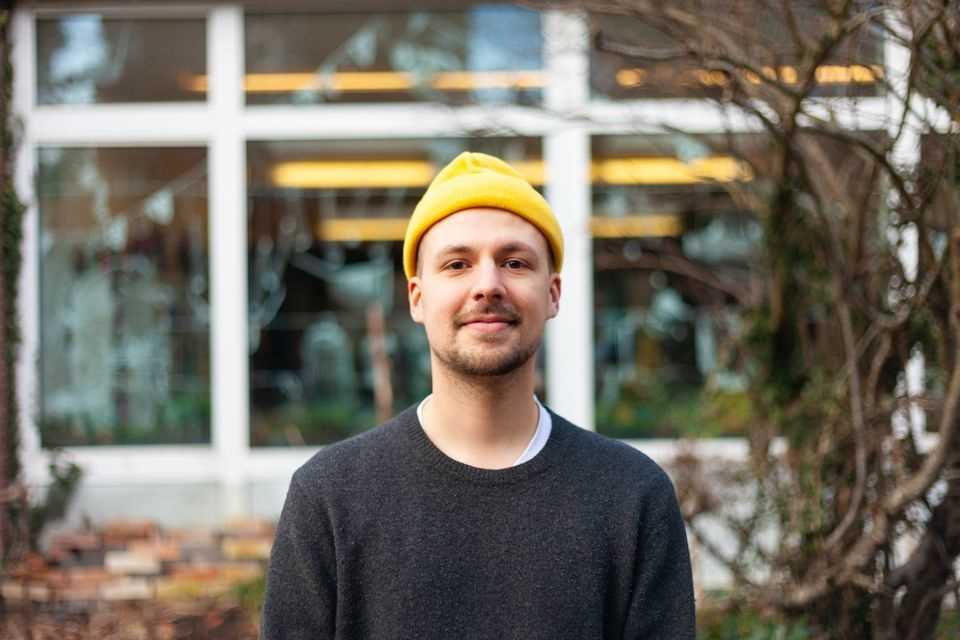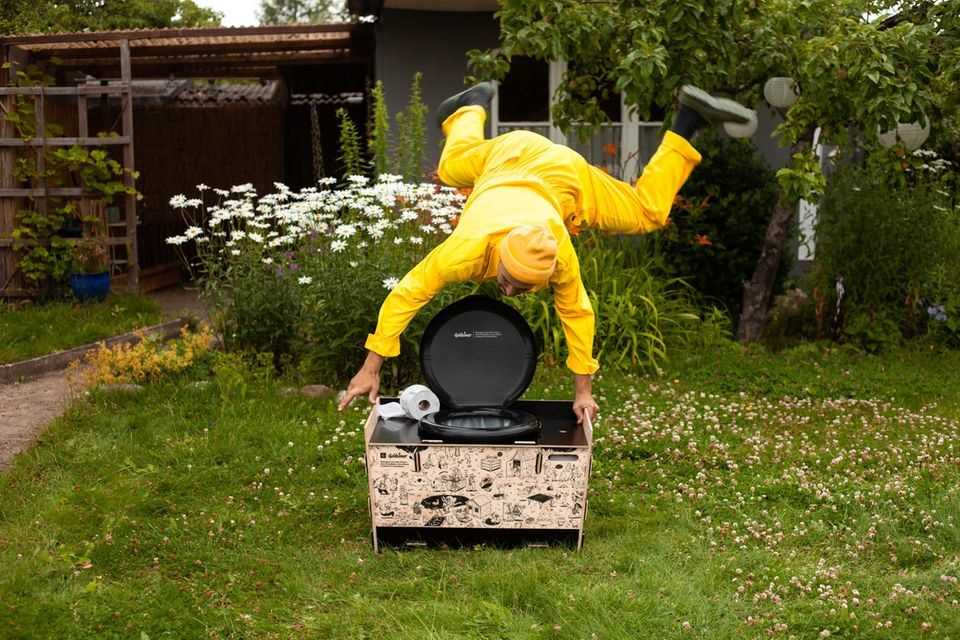You don’t talk about toilet paper? Oh but! At least when it comes to social toilet paper. We talked to Manou Otolski von Goldeimer about dry toilets, humus fertilizer and social toilet paper.
BARBARA.DE: Hello Manou, can you briefly introduce gold buckets for us?

© Gold bucket
Manou:
Goldeimer is a non-profit company from Hamburg that is committed to global sanitation. Our vision »All for toilets! Toilets for everyone! ”Describes this very aptly. We believe that every engagement has to be fun so that you can commit yourself to one cause with vigor over the long term – in our case: toilets. That’s why we create a good atmosphere in our ecological festival dry toilets and tell people about the beautiful things and the crises around the toilet. In addition to festival toilets, we also offer educational workshops, raise awareness of sustainability and the circular economy, participate in research projects on the subject of nutrient recycling and alternative sanitation – and make social toilet paper and soap.
What does the term “social toilet paper” mean?
This means that no profits go into private pockets. We use everything we have in terms of financial and time resources to fulfill our charitable purpose: To make a contribution to improving the global sanitation situation, to recycle nutrients, to create educational offers.
And how do you protect the environment with your toilet paper?
Toilet paper does not protect the environment. But some things are more environmentally friendly than others. Once it sails down the toilet, it won’t be recycled again. It is therefore important that no fresh fiber paper ends up in here, only recycled paper, the fibers of which have already been reused several times. Everything else does not make sense. Much of the pulp used to make paper in Europe comes from Brazil. Everyone knows what that means. In addition, recycled paper uses only a fraction of the water and energy that is needed to produce fresh fiber paper. Whether people buy our recycled paper or other recycled paper – the main thing is that it is marked with the Blue Angel environmental seal. Then you know that it is made of 100% waste paper and that no fresh trees are flushed down the toilet. Our packaging is also made from 60% recycled plastic and 15% chalk – this is how we save resources here too.
On your side, you talk a lot about WASH projects. What is WASH?
WASH stands for access to water, sanitation and hygiene. These three components are mutually dependent and, in a triad, ensure a sustainable improvement in living conditions. Toilets alone are not enough. In addition to a toilet, a decent and safe sanitation also includes clean drinking water and soap for hand washing – and toilets are needed for permanently clean water.
And what have you already achieved with regard to WASH?
With the toilet paper, buyers support our charitable work, which also includes part of the money from the sale of toilet paper Viva con Agua and flows into worldwide projects there. These can be viewed on the Viva con Agua website. In 2019, together with local helpers, we also started a small pilot project in Addis Ababa, the capital of Ethiopia, to gain insights into whether circular sanitation works here as well. Several dry toilets with a composting station and sewage treatment plant were set up. We also support Welthungerhilfe projects, for example through our “Good Business” donation campaign or our social masks that donated to the Corona emergency fund.

© Gold bucket
But here in Germany is probably our most important WASH project: Our festival dry toilets. During the festival they are always clean and equipped with toilet paper, disinfectant gel and a good mood – with everything you need. In the 2019 festival season, thousands of visitors filled the bins properly and thus also made a contribution to our vision.
Since you are just mentioning your festival dry toilets. What happens to the faeces in the toilets that are used?
The legal situation here is very difficult. It is currently not allowed that contents from dry toilets can be composted and re-spread without restriction. In the long term, however, this has to be made possible, because if we don’t recycle the nutrients in our excretions, we will get a problem in the future – keyword phosphorus. With the network for sustainable sanitary systems eV (NetSan), in which we organize ourselves with other actors, we make progress (e.g. with the DIN SPEC 91421). We hope that in a few years we will be able to manufacture and use fertilizer from dry toilet contents in Germany. So long we have to find other ways to do something with our festival shit. Our friends from Finizio – Future Sanitation, for example, operate a pilot plant in Eberswalde for composting dry toilet contents and are doing important work on the way to legalization. Our dry toilet contents from the 2019 festival season, a total of 30 t, were refined into wonderful, harmless and fertile humus fertilizer on the system. Last year we planted a small poop forest on this earth with an exception regulation in the middle of Hamburg, on which bushes and poplars now grow.
How did you come up with the idea of the dry toilets?
Dry toilets are not our invention. The first patent for it was filed in 1860 – a year before the first working phone was tested. With us, however, all of this is basically due to Malte (Managing Director and Chief Shit Advisor at Goldeimer, editor’s note) and a severe diarrhea on the project trip of Viva con Agua and Welthungerhilfe in Burkina Faso. It has been ten years since he first noticed the importance of having access to toilets for society – especially if it is not guaranteed. Malte’s interest in toilets increases immeasurably and he notices how many problems are related to toilets: phosphorus peak, humus depletion, diarrhea in young children, contamination and consumption of water and much, much more. In 2013, the first gold bucket dry toilets were available at four festivals.
How much water can be saved with such a dry toilet?
We use around 6 – 9 liters of water per flush in a conventional toilet. A dry toilet does not need any, as it is washed with wood shavings. They are produced as waste in the wood processing industry and are simply composted with and returned to the ground. We keep around 1.5 million liters of drinking water from flushing each festival season.
Do you have any future projects you’d like to talk about?
First of all, we have to reach the milestone of being able to officially compost and use dry toilet contents without restrictions. After that we have a huge bunch of plans!
Thank you for the nice interview!
If you want to find out more about gold buckets and the projects behind them, just have a look at the site www.goldeimer.de after. Here you can also buy the social toilet paper or even take out a subscription!
And here are 10 interesting facts about toilet paper.
